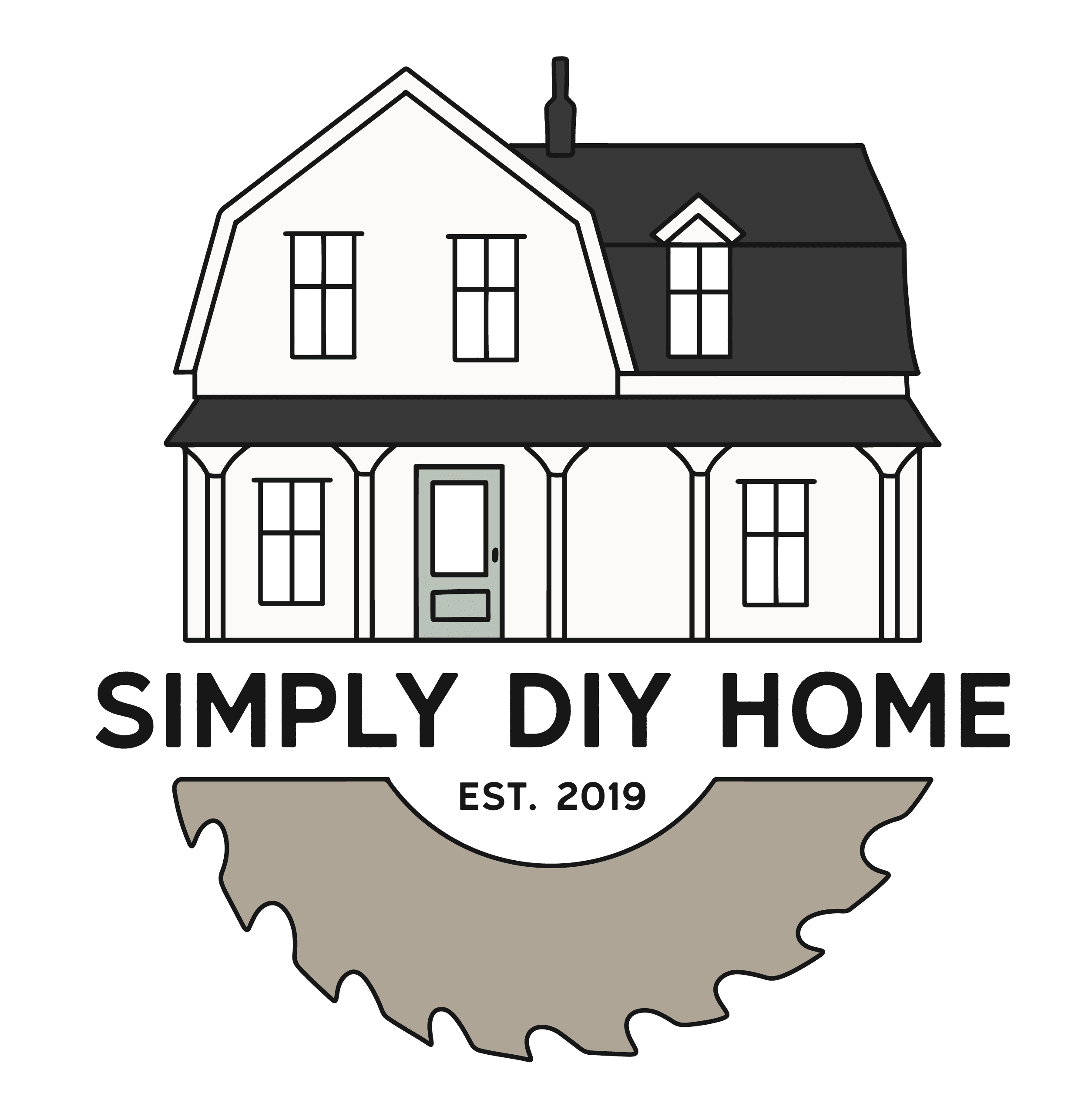The burning question is which is better? MDF or wood baseboards? In this article we will talk about MDF vs wood. What is MDF, where to use it, and if it’s truly better than wood.
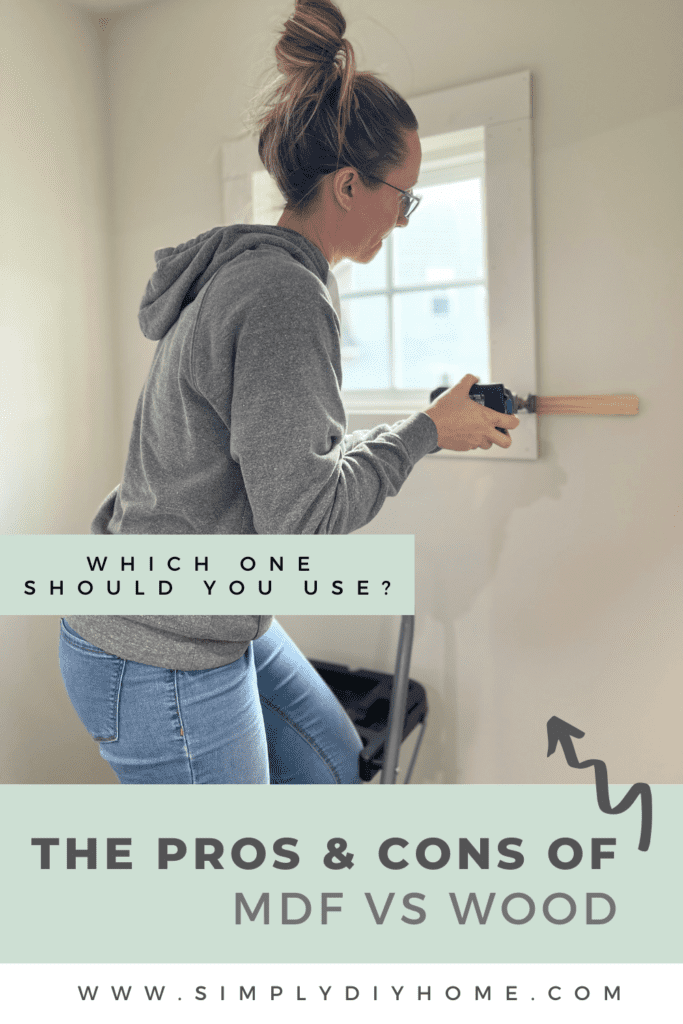
What is MDF? Is MDF fake wood?
MDF stands for Medium-Density Fiberboard. The fiberboard is made up of leftover engineered wood composite that contains hardwood and softwood. Unlike real wood, MDF doesn’t have any grain or knots to it. MDF boards don’t warp either which is a big turn on for most woodworkers. Often used in closets for shelves this materials affordability is another reason so many people turn to it.
Cons of MDF trim- Health risks, Water Damage & More
Some drawbacks to working with MDF mouldings you have to consider the health risks that come with the product. You have to keep in mind there will always be health risks that come with working in woodworking. With MDF it contains a chemical called urea-formaldehyde. Until the MDF is fully sealed off, it will continue to off gas this chemical into the air.
When working with MDF you want to make sure you are in a well ventilated area or possibly outside would be the best option. I am guilty of not following this rule, and from here on out, I will be extra sure that I am being as cautious as possible. But, you want to make sure that you have a mask or some type of respirator when cutting MDF.
Until the MDF is fully sealed off, it will continue to off gas this chemical into the air.
As for durability, you have a few conditions that you need to be aware of when working with MDF. Medium density fiberboard fares poorly to moisture and wet areas which eliminates certain rooms that you can install MDF. MDF is known for swelling when coming in contact with moisture overtime. Using in bathrooms or on the exterior of your home is highly frowned upon.
MDF can be a lot heavier than normal pieces of wood or plywood. So handle with care, the edges of MDF can easily be damaged and smashed in. I don’t know how many boards I have had to cut the ends off because they were dented or smashed because I’ve dropped them.
Is MDF trim better than wood?
This is more of a personal preference when it comes down to deciding which to choose, MDF baseboards or wood trim. Overall wood is always going to be stronger and more durable than MDF trim. MDF is a lot softer making it prone to denting easily. So if you have young children around or a high-impact environment like a mudroom, MDF might not be a good choice.
Solid wood like pine baseboards are going to last a very long time and can handle a beaten. Think back to the 1800s or 1900s some of those houses still have their original wood trim. Now they didn’t have a MDF type of baseboard back then but I can bet you that those houses wouldn’t still have MDF trim after all those years.
What is the best material for baseboards?
When choosing a great product for your next project like a baseboard or a door casing I highly recommend solid wood. In my opinion pine wood is the most commonly used wood material and is a much smarter choice. Don’t get me wrong I have mainly used MDF for my baseboards or window trim because of it being the cheaper option. But after personally using it to frame out a few windows in my home I am convinced I will spend the extra money for a better quality product.
RELATED: How To Install Easy Farmhouse Style Window Trim
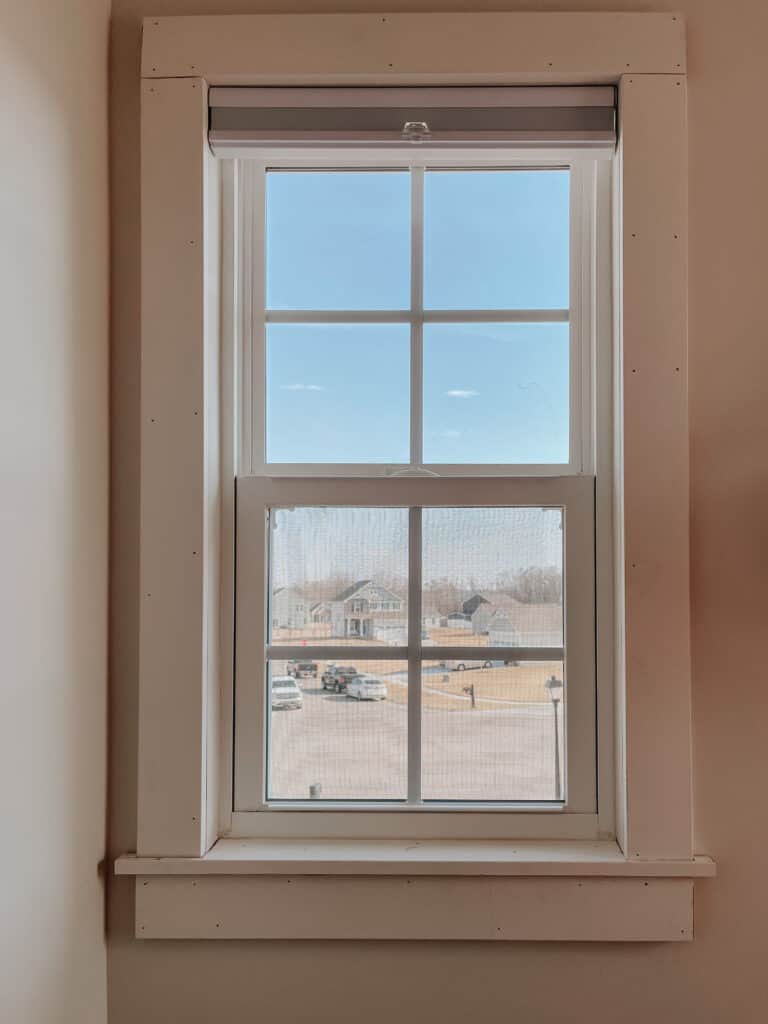
Another excellent choice of baseboard materials you could consider would be hardwood mouldings like oak or maple. Hardwood moulding is definitely going to be on the higher end of your budget but it will last a lifetime. Working with wood pieces in general I believe to be way easier and less messy than working with any engineered wood product. Don’t get me wrong they are both going to make a mess while cutting but the amount of mess and extra fine dust that comes from cutting MDF is greater in my opinion.
RELATED: How to Remove and Install Existing Quarter Round and Trim
Can I use MDF for accent walls?
Depending on what type of accent wall you are creating and the location I would say use MDF. Most of my accent walls are created with pvc trim or MDF boards. My thoughts on this are it’s cheaper and as the years go on maybe you want to change things up. You won’t feel as bad for wasting your money on something you decide to take down.
Just recently I have used wood for one of my accent walls. I will say it was so easy to work with and the right choice to use wood trim due to it being in my stairwell. Knowing good and well over time it will most likely take a beaten.
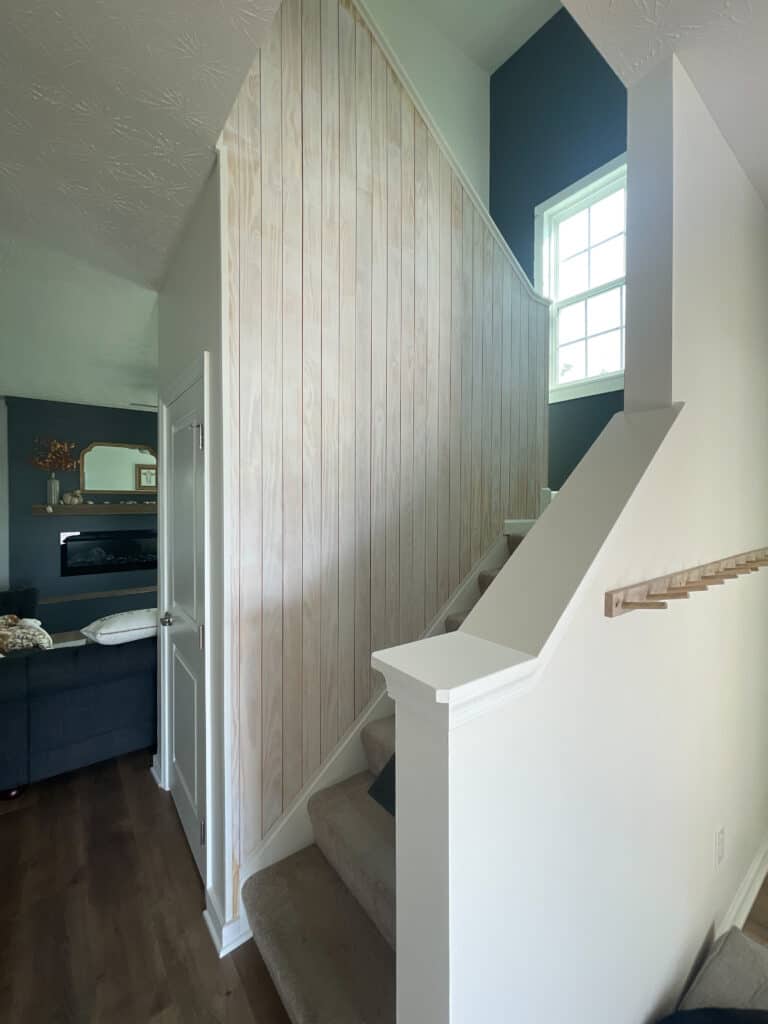
How do I choose baseboards? Which one is right for me? MDF vs Wood baseboards.
To make sure you’re making an informed decision let’s do a recap of the pros and cons of MDF and wood trim.
MDF is great if you’re on a budget and need large quantities. If you have curves or bends MDF is flexible and doesn’t split. MDF is not good for bathroom installations, and doesn’t do well in high moisture areas. The durability level is low and can dent or scratch easily. By itself it does not offer structural support. When adding other wood materials to the project then it can offer a little more reinforcement.
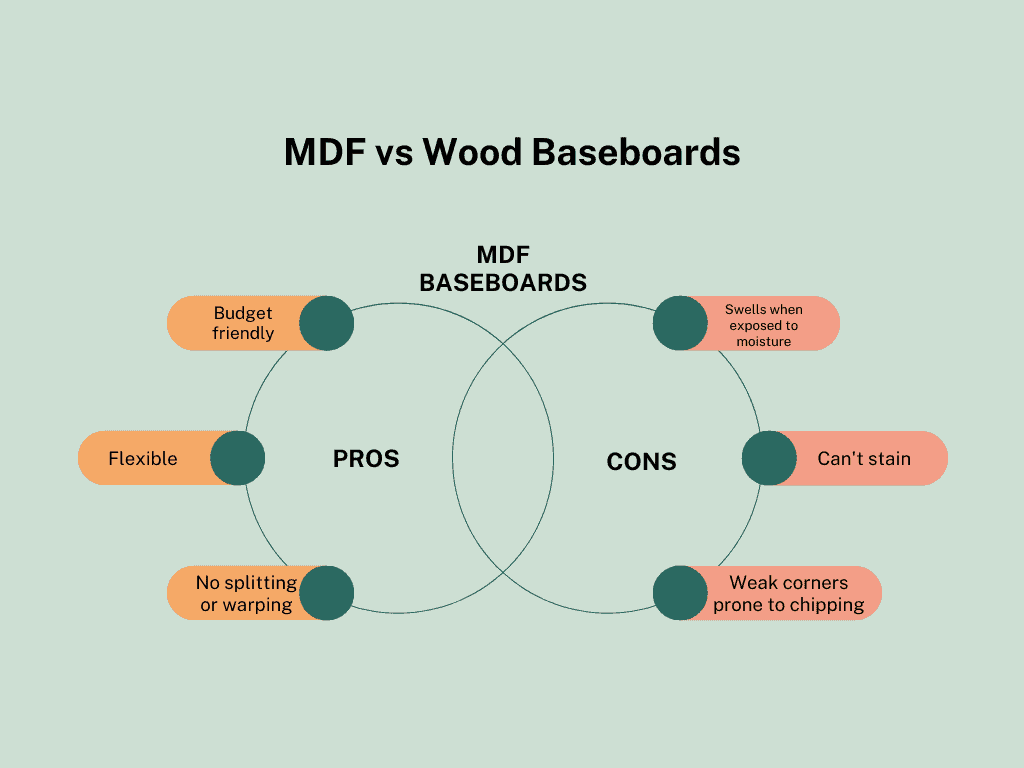
Real wood baseboards have many positive attributes to using them. You can have great peace of mind knowing that they are durable and can handle moisture much better than it’s contender MDF. There are many options to finishing wood like staining, painting or leaving natural. Wood products are typically a lot lighter than manufactured woods.
Some cons to using real wood trim is the cost is much greater than buying MDF. Wood can also split and break when installing with a nail gun. Lastly, when purchasing long baseboard wood trim you need to check that each board is straight. Natural wood boards are known for bending and warping.
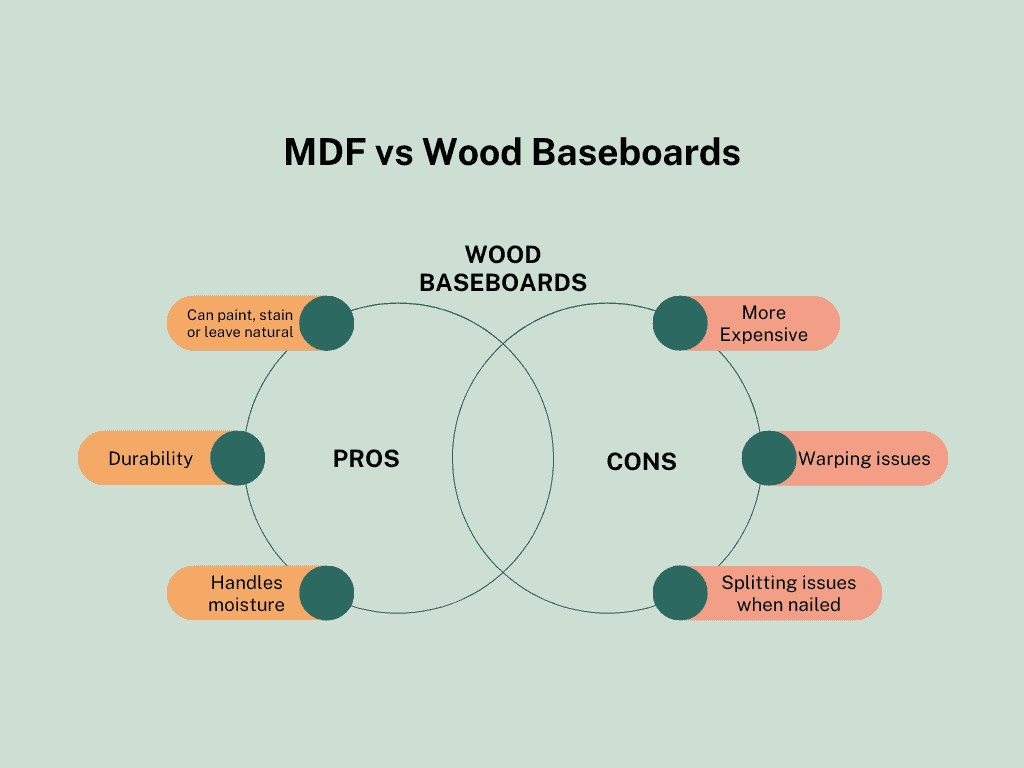
Now that you know everything you need to know about MDF vs wood baseboards, I hope this helped you choose your final product. It’s good to know as a DIYer you have options and budget friendly materials to choose from.
Down below are some posts that are relatable to DIY-ing.
